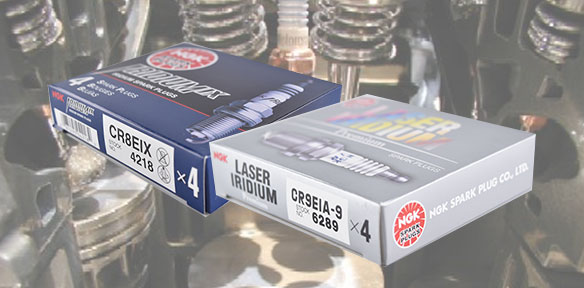


According to NGK, Ruthenium plugs can last up to 200,000 miles or 321000 km.

Ruthenium is more resistant to corrosion and oxidation than iridium. Further, they improve fuel economy, performance, emissions, and acceleration through better flammability. The electrodes of these plugs have increased wear resistance, meaning they can eventually become “lifetime” plugs that never need to be replaced. Using ruthenium electrodes is said to extend spark plug life by two times as compared to modern iridium electrodes and by eight times as compared to standard nickel electrodes. Spark plugs made of Ruthenium are the latest technological development. When it comes to durability, ruthenium plugs are great! According to NGK, Ruthenium’s lifespan is higher than spark plugs made from other materials, including the platinum families. When it comes to comparing ruthenium and iridium spark plugs, we can say that they both have differences, but also similarities.Īlthough they perform the same function and are among the best plugs, they are better than the others in some elements. These spark plugs have proven to last up to 120 000 miles or 193000, with some providing efficient functionality up to 150 00 miles or 2410000 km depending on the vehicle. However, iridium is currently about half the price of platinum. This makes it a precious metal, making it expensive like platinum.
#RUTHENIUM VS IRIDIUM HOW TO#
Read more about how to correctly acknowledge RSC content.With an excellent high melting point of 4471° F or 2466 ☌, it can withstand high engine temperatures and is highly resistant to tear and wear. Permission is not required) please go to the Copyright If you want to reproduce the wholeĪrticle in a third-party commercial publication (excluding your thesis/dissertation for which If you are the author of this article, you do not need to request permission to reproduce figuresĪnd diagrams provided correct acknowledgement is given. Provided correct acknowledgement is given. If you are an author contributing to an RSC publication, you do not need to request permission Please go to the Copyright Clearance Center request page. To request permission to reproduce material from this article in a commercial publication, Provided that the correct acknowledgement is given and it is not used for commercial purposes. This article in other publications, without requesting further permission from the RSC, With the advantages of low cost and simple production, it is believed that the ROIOT electrode could be a promising candidate for use as a sensing material for pH sensor development.Ī ruthenium oxide and iridium oxide coated titanium electrode for pH measurementĬreative Commons Attribution-NonCommercial 3.0 Unported Licence. The practical application of the ROIOT electrode was demonstrated by measuring the pH values of various buffer solutions and complex samples. In the long-term experiment of 30 d, potential measurements using the ROIOT electrode had a minor fluctuation of 1.5 mV d −1. The ROIOT electrode also demonstrated great detection reversibility and stability in various pH conditions. The response time was 4.0–13.5 s, which was fast and very sensitive to the pH change. The ROIOT electrode showed near-Nernstian sensitivity of −50.8 mV pH −1, with a wide detection range of pH 2–12. The RuO 2 and IrO 2 particles were decorated on the surface of the electrode.
#RUTHENIUM VS IRIDIUM CRACKED#
The characterization results indicated that the ROIOT electrode had a cracked morphology. This paper reports the pH sensing capability of a ruthenium oxide (RuO 2) and iridium oxide (IrO 2) coated titanium (ROIOT) electrode.


 0 kommentar(er)
0 kommentar(er)
